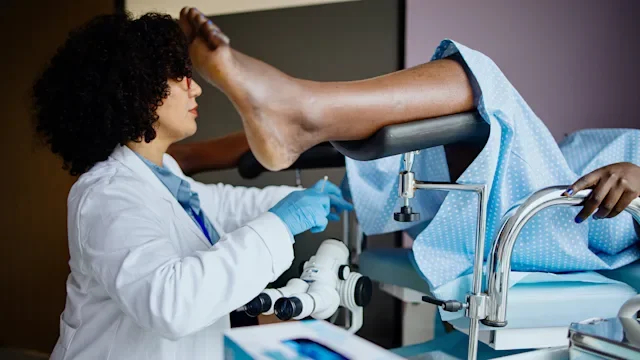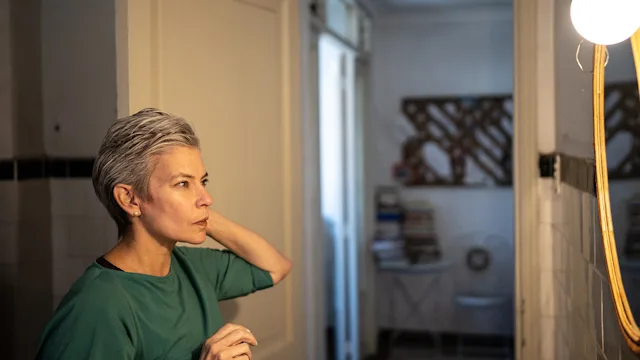Key takeaways:
Health insurance plans don’t cover breast augmentation surgery for cosmetic purposes.
As of 2020, the average surgeon's fee for this procedure is $4,866.
The total cost for breast augmentation can range from $6,000 to $12,000. This includes fees for the surgeon and the hospital or facility, plus anesthesia, medical tests, and prescription medications.
Breast augmentation — sometimes called a "boob job" or "augmentation mammaplasty" — remains one of the most popular forms of cosmetic surgery. More than 250,000 Americans had it done in 2020. Augmentation changes the size and appearance of one or both breasts by transferring body fat to them or adding artificial implants. As with other types of cosmetic surgery, health insurance plans won’t cover the cost of this procedure.
Breast augmentation isn't the same as breast reconstruction. If a breast cancer patient has had a mastectomy and wants reconstructive surgery afterward, federal law requires most private insurance plans to cover that.
But for cosmetic breast-augmentation surgery, you’ll almost certainly be paying out of pocket. Read on for an overview of how much it’s likely to cost and which factors can affect the price.
How much does breast augmentation surgery cost?
The American Society of Plastic Surgeons reported in 2019 that the total cost of breast augmentation was between $6,000 and $12,000. One reason for the broad price range is the plastic surgeon's fee. The average fee for a typical breast augmentation in 2020 was $4,866, according to the Aesthetic Plastic Surgery National Databank.
The surgeon's fee can vary based on:
Their level of experience
The market prices in your local area
The specifics of the procedure
Other surgical considerations, discussed below, will affect the cost as well.
What can influence the average cost of breast augmentation?
Beyond the plastic surgeon’s fee, the overall cost of breast augmentation will include such expenses as:
Hospital or surgical-facility operating room fee
Cost of anesthesia
Medical tests
Post-surgery garments, such as a compression bra to control post-op swelling
Prescription drugs, such as pain medication
Read more like this
Explore these related articles, suggested for readers like you.
The facility where the surgery takes place makes a big difference in your total cost. For insured people, surgery can cost more than twice as much if performed at a hospital rather than an ambulatory care center. This may not be the case for people paying out of pocket, though.
You can find out facility-fee details ahead of your breast augmentation surgery. The No Surprises Act allows you to request binding good-faith cost estimates for the procedure from your area’s hospitals or ambulatory care centers. Once you have facility-fee information from those estimates, you can ask your doctor to do the surgery at a facility you can afford.
The FAIR Health website helps you zero in on the costs for people who are paying out of pocket. In Columbus, Ohio, for example:
The average uninsured cost of inserting a single breast implant is $2,752.
You'd also have to pay $2,151 for anesthesia.
The biggest expense can often be the facility fee, which varies widely.
In Columbus, this fee is estimated to be $20,162 for an ambulatory surgical center (ASC) or $9,502 for an outpatient hospital.
In Chicago, by contrast, the price difference is smaller. The ASC fee would cost $17,285, while the hospital outpatient fee would be $15,556.
What else can affect the price of breast augmentation?
The technique and materials that your plastic surgeon uses will help determine your overall costs. Discussing these aspects with your doctor is also the best way to get the result you want. You and your doctor should talk about your desired breast shape, size, surface texture, incision site, and type and placement of the implant or fat transfer.
Additional procedures may add to the cost. One example is moving the nipples. A surgeon's average fee for nipple cosmetic surgery in 2020 was $1,739.
It's also important to tell your surgeon about any history of breast surgery, such as whether and how your breasts have been augmented, reduced, or otherwise altered in the past. Be sure to tell the doctor how your body reacted at the time. These details will influence their surgical decisions.
Breast augmentation size
When it comes to cost, implant size doesn’t matter. Larger implants cost the same as smaller ones. This is true whether you're getting silicone or saline implants.
Here, again, you’ll want to have a detailed conversation with your surgeon. Discuss your desired breast size and how much it would differ from the existing breast. This will help the doctor decide on the best surgical approach.
Breast augmentation techniques
To make the breasts larger, the surgeon inserts either artificial breast implants or fat transferred from another part of the body.
Breast implants are the more common choice. Manufacturers offer many options to choose from. Beyond the basic materials — saline-filled or silicone-filled — implants may also have different shapes, structures, and textures.
Silicone vs. saline breast implants
If you've decided on artificial breast implants, the choice of silicone versus saline can greatly affect the cost. Generally, silicone implants are more expensive. In one 2019 study, researchers found that saline implants cost about $1,300 less than silicone implants and lasted about 5 years longer.
Fat-transfer augmentation
This type of breast augmentation — also called fat grafting, lipofilling, or living-fat transfer — is becoming more popular, in part because there’s no insertion of silicon or saline and no need for anesthesia.
Instead, the doctor moves fat tissue from one spot on your body to another. Using liposuction, they take your own fat from one part of the body, such as the belly, sides of the abdomen, back, or thighs. The surgical team purifies the fat through washing, filtering, or other methods. The surgeon then injects it into the breast to get the desired shape.
Fat transfer yields a relatively subtle increase in breast size. People get more volume at the top of their breasts or increased definition of their cleavage.
Surgeons’ average fee for breast fat grafting was $3,318 in 2020, according to the Aesthetic Plastic Surgery National Databank.
Nipple augmentation
This secondary procedure changes the appearance of the nipple and areolas. It may involve repositioning or raising the nipple, improving symmetry, increasing or decreasing the nipple’s size, or changing how far it projects.
Post-surgery costs
You should expect certain follow-up care expenses. As mentioned above, these could include:
Post-operative garments, such as a compression bra
Follow-up appointments
Medical tests
Prescriptions for pain medication
If you need to have additional surgery because of implant problems or because you want to further revise your breasts’ appearance, a new set of costs will apply. However, if the implant warranty from the original surgery is still in effect, it may cover some of those costs.
Can I finance breast augmentation surgery?
Many plastic surgeons offer financing options or payment plans. You can also pay for your surgery with a healthcare credit card such as CareCredit. Be sure to keep a close eye on the payment terms and interest rate, though. This is especially important if you decide to take advantage of a no-interest offer. If you still have a balance at the end of the set introductory period (often 6 to 24 months), you’ll have to pay interest at an annual percentage rate (APR) as high as 26.99%.
You can also look for online lenders that offer healthcare loans, such as Prosper Healthcare Lending. It offers 60-month loans with rates between 7.95% to 36.00% APR. Depending on your credit history, you may well get a better rate from your regular credit card or a personal loan.
Does my health insurance cover breast augmentation?
Probably not. Most health insurance plans don’t cover cosmetic surgery for breast enlargement or any other surgery intended solely to change the appearance of your breasts. They also don’t cover any complications that may result from this type of surgery.
Also, bear in mind that some insurance plans won’t cover treatment for breast diseases that could occur after you’ve had breast implants.
In short, undergoing breast augmentation surgery can expose you to financial and health risks. Before scheduling the surgery, it’s wise to review your health plan's specific coverage rules for breast augmentation and other related conditions.
The bottom line
Health insurance plans will not cover surgery to enlarge your breasts or otherwise enhance their appearance for cosmetic reasons. You'll pay all costs out of pocket, so be sure to understand what they are: the surgeon's fee, the price of any implants, and the fees for anesthesia and the medical facility. Insurers will cover post-mastectomy breast reconstruction, though, as required by law.

Why trust our experts?


References
American Society of Plastic Surgeons. (n.d.). How much does breast augmentation cost?
American Society of Plastic Surgeons. (n.d.). How much does breast implant revision cost?
American Society of Plastic Surgeons. (n.d.). What is breast augmentation?
Bellini, E., et al. (2017). The science behind autologous fat grafting. Annals of Medicine and Surgery.
CareCredit. (n.d.). CareCredit FAQs.
Centers for Medicare & Medicaid Services. (n.d.). Women's Health and Cancer Rights Act (WHCRA).
Centers for Medicare & Medicaid Services. (2022). No Surprises Act.
Clark, K. (2021). Six of the most common areas that plastic surgeons do fat transfers. American Society of Plastic Surgeons.
FAIR Health. (n.d.). FAIR Health Consumer.
Hutchinson, O. (2018). Cosmetic procedures for the nipples and areolas. American Society of Plastic Surgeons.
Knight, V. (2018). One implant, two prices. It depends on who’s paying. Kaiser Family Foundation.
MP Plastic Surgery. (n.d.). Does the breast augmentation cost vary depending on size?
National Cancer Institute. (2017). Breast reconstruction after mastectomy.
Prosper Healthcare Lending. (n.d.). Cosmetic surgery financing for your patients.
Salemy, S. (2019). How much does breast augmentation cost? American Society of Plastic Surgeons.
Siotos, C., et al. (2019). Cost-effectiveness analysis of silicone versus saline implant-based breast reconstruction using the BREAST-Q. Plastic and Reconstructive Surgery.
The Aesthetic Society. (2020). Aesthetic plastic surgery national databank - statistics 2020.
U.S. Food and Drug Administration. (2021). What to know about breast implants.
UnitedHealth Group. (2021). Shifting common outpatient procedures to ASCs can save consumers more than $680 per procedure.

















